- Home
- Injections
- Laser Treatments
- Specialties
Specialtiesview all
- Other Treatments
- Before After Photos
Before After Photosview all
- Contact Us
- Doctor And Staff
- About Celibre
- Blogs
Do you have stubborn areas of fat that won’t go away no matter how much exercise or dieting you do? It is frustrating, and if this sounds like you, then you may have researched potential fat-removing treatments that can help you decrease fat right where you need it.
But what works and what doesn’t? What’s safe and proven and what’s just hype? There are so many choices out there, finding the appropriate treatment that best fits your needs can be an overwhelming challenge!
Here are just a few of the newer technologies that you may have come across in your research: radio frequency, deep dermal tissue heating, laser-assisted liposuction, mesotherapy (injections of fat dissolving substances like Kybella), tissue massage, or different combinations of these.
Here, we’ll discuss one treatment: the VaserLipo System and Vaser HD (Vaser High Def) by Sound Surgical Technologies. The term VASER stands for: Vibration Amplification of Sound Energy at Resonance. The first generation of this technology was introduced back in March 2001. Sound Surgical Technologies then received FDA approval in September 2002 for the third generation of the system. The fundamental concept of VaserLipo is to enhance body contouring by utilizing sound waves.
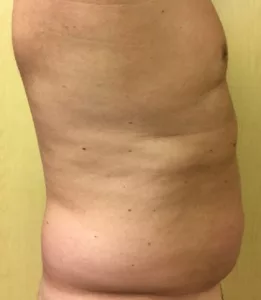
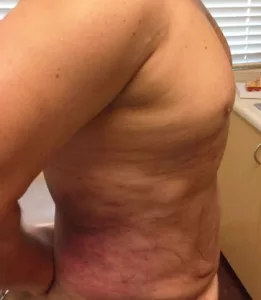
VaserLipo stands out from other traditional fat removal and body contouring treatments as it employs ultrasonic energy (sound waves) instead of laser energy to fragment fat particles. This fragmentation, known as “emulsifying” the fat, reduces the size of the particles, enabling their faster removal through aspiration or suction using conventional methods.
Just how does ultrasonic energy emulsify that fat? Think of it as placing a tuning fork on a bubble: the rapid vibration is no match for the fragile fat cell and it ruptures apart easily. Once broken down into smaller parts, the practitioner or surgeon can then remove the fat cells more quickly and easily.
While the scientific principle underlying VaserLipo is solid, does this mean that it really works to enhance fat removal and translates to better results? Many proponents of VaserLipo say that it does. They claim that the body sculpting and fat-reducing capability is superior to other, similar systems. The reason is, they claim, becuase VaserLipo selectively emulsifies the fat (selective emulsifying) which when combined with improved fluid management, can result in less bruising, less post-procedure swelling and less overall pain after your procedure. All of these factors, they claim, can help you have a speedier recovery after your procedure as well.
To further enhance your results and overall outcome, practitioners often combine VaserLipo with other technologies. For example, some practitioners will use VaserLipo for larger area where you need more fat debulking, and then follow that with SmartLipo (laser-assisted liposuction) in smaller areas. Almost any area on the body can be treated with the VaserLipo system making it very versatile.
There are a few cautionary points for the VaserLipo and VaserHD systems. Remember, these systems rely on three factors: heat, motion and suction, much like traditional liposuction which is the “gold standard” for fat removal. However, the unique factor is the ultrasonic component that these technologies use to emulsify or break down the fat particles. The heat that’s generated can make these systems tricky. In the older generations of these systems, there was inconsistent control over the tissue-heating process. This lead to too many complications following VaserLipo treatment. Although there have been some corrections, the use of these technologies still carries a higher risk of complications compared to traditional liposuction alone. The critics do tend to agree however, that the technology works.
Celibre Medical does not provide VaserLipo, nor do we offer any liposuction treatments at any of our facilities. We simply wanted to share with you our unbiased view of Vaser technology to educate and inform you as you wade through the multitude of information that is out there. We believe we can be a reliable resource for you to look to when seeking information on any cosmetic treatment. Those who achieve the highest satisfaction are the patients who actively seek comprehensive understanding and knowledge of the procedure and treatments prior to proceeding, ensuring they are well-informed about all the intricacies involved.
Again, it’s important to reiterate that these fat-removing treatments are not a substitute for a weight loss program and should never replace the benefits of healthy weight loss through diet and exercise. No matter what technology or procedure you chose, your outcome and satisfaction will rely heavily on the technique and expertise of the provider that you chose for your service. You also need to ensure that you are an appropriate candidate for the procedure. So, do your research and ask lots of questions, and remember that you are your own best advocate.
Some people have one while others have two, but no matter how many you have, one thing’s for sure: no one likes wrinkles between their eyebrows! Commonly referred to as “11s” (if you’ve got two), these wrinkles are the result of repeated contractions of three different muscle groups between the eyes. They’re typically active with facial expressions like frowning, concentrating or squinting. Over time, they become “hyperactive” and pull the inner part of your eyebrow downward and inward, deepening the lines in the middle.
Botox and Dysport are perfect for these pesky lines. By selectively relaxing these muscles, we can subtly smooth them away and give you a natural, relaxed appearance. Most people also find that Botox (Dysport) in this area helps to lift their inner brows a bit, helping them look more alert and awake.
And if the lines between your brows don’t completely go away with Botox alone, then we can carefully place a small amount of dermal filler like Restylane or Juvederm there to help plump and smooth more stubborn lines between the brows. For someone with deeper creases, the combination of these two treatments can literally transform their appearance.
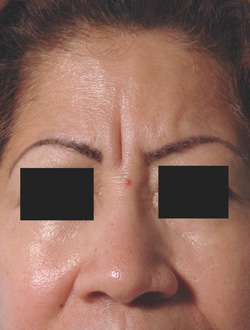
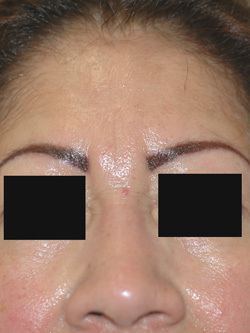
At Celibre Medical, we firmly believe that oral or topical antibiotics and other medications may be a valuable component of most acne treatment programs. However, we would like to suggest that these medications (oral antibiotics specifically) are often over-used and do not address some of the underlying causes of acne. Because of this, the acne will most likely return when the patient discontinues the antibiotics.
Current research indicates that the bacteria responsible for acne (P. acnes) are now becoming increasingly resistant to many of the mainstay acne antibiotics available. This is also true with many other bacteria that cause disease and illness. Besides this sobering reality, oral antibiotics for acne have systemic (whole body) side effects as well.
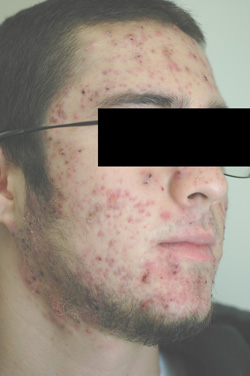
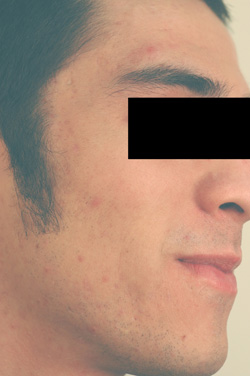
Our patients often come to us after being placed on acne antibiotics for months (sometimes over a year consecutively) without any monitoring of their treatment plan or providing other acne treatment options that don’t involve long-term use of antibiotics. At Celibre, we believe that oral antibiotics should be implemented as needed when an acne patient would benefit from a systemic effect. However, the goal is to make this a short course of action to compliment the acne laser treatments or photo-dynamic therapy.
By using class IV medical lasers, we treat one of the root causes of acne – the sebaceous (or oil) glands. By combining lasers or photo-dynamic therapy with a good skin care regimen, we are able to effectively treat and control acne, a condition that has no cure. Because acne lasers or Photo-dynamic therapy are safe for almost all patients, these provide a good option to those that are looking for a better way that doesn’t involve long-term acne antibiotic use.
If you’re a peri or postmenopausal woman, you may have heard the term “vaginal rejuvenation”. You’ve entered the next phase of womanhood and are probably experiencing a host of changes to your body—some more welcome than others! One of the problems that we hear most often about at Celibre Medical is the change in the appearance of the skin around the vagina. These folds of skin or “lips” as they’re referred to are called the labia majora.
There are three, distinct changes that can happen to the labia majora during and around the time of menopause: changes in texture, change in volume and change in color. Our vaginal rejuvenation program consists of specific interventions that can correct or reverse these changes.
Texture: Around the time of menopause, many woman notice a textural change of the skin of their labia majora. Due to decreasing or a lack of hormonal stimulation, you may notice this tissue “shrinks” and “shrivels” a bit. We can use our Sciton Profractional laser to stimulate the development of more collagen in your area. This helps it look smoother, fuller and more supple once. We typically recommend you have 2 to 3 treatments at close to monthly intervals.
Volume: The changes discussed in the above section can not only affect the texture of your skin, but also the volume of labia as well. Loss of tissue volume can cause the labia to look flat, saggy, and may even make wearing certain clothing, like pants, painful or uncomfortable. For this issue, we can inject hyaluronic acid-based dermal fillers like Restylane Lyft into the labia. This product works very well to restore volume as it powerfully attracts and absorbs water. This treatment may also improve the skin quality of the area, so it often works hand-in-hand with resurfacing and enhances your overall result. The results usually last anywhere from 6 to 12 months.
Color: If the skin on your labia has darkened over time, we can help correct this using either topical skin-lightening creams (8% hydroquinone) or q-switched lasers which targets excess melanin (skin pigment). The length of time and/or number of treatments that you’ll need can vary based on the amount of lightening you need and the size of the area that’s treated.
Again, it’s important to mention that while these changes are normal, they can be worrisome and affect your confidence and desire for intimacy. If you’re suffering with these changes, you don’t have to simply accept them. There are effective, safe solutions for you that really work!

If you’re interested in Vaginal Rejuvenation, call today for more information
By now, most patients like you understand how important it is to wear sunscreen. Even though most wear sunscreen, we’re often surprised to learn that very few understand how to wear sunscreen effectively!
We spend time with our patients telling them about the importance of effectively using sunscreen for skin health. First, we discuss SPF (Sun Protection Factor). An SPF of 30 is sufficient for many and any SPF higher than 50 offers little added protection.
In addition to SPF, how you apply and how often you apply your sunscreen is important.
Lastly, remember to apply sunscreen to more than your face. Protect your scalp, ears, neck, chest, forearms and hands as they are often forgotten in your morning routine. Poikiloderma is a common cosmetic problem of red and brown discoloration to these areas due to chronic exposure to the damaging rays of the sun.

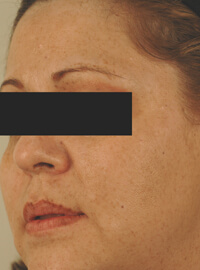
Age spot removal before and after pictures
Do you have Rosacea? Redness, irritation, flaking and pimples well past your mid-twenties? While you may know about the facial redness that goes along with Rosacea, maybe you weren’t aware that these other symptoms can be caused by it too? While treatments can certainly keep Rosacea under control, unfortunately it can be chronic and has no known cure. Read on to learn more and find out how pulsed dye lasers can help you.
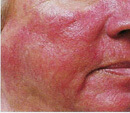
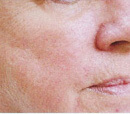 Rosacea involves chronic skin inflammation. This inflammation over time stimulates the small blood vessels in your cheeks, nose and chin to become enlarged. These blood vessels, called telangectasias (small capillaries), are what causes the redness of your rosacea. These small blood vessels can often be accompanied by burning, flaking and pimple like eruptions. If this process goes unchecked for a long time, the chronic irritation can cause permanent changes in skin texture. This can also change the appearance of our nose, making it look larger, bulbous, and swollen. This is called rhinophyma.
Rosacea involves chronic skin inflammation. This inflammation over time stimulates the small blood vessels in your cheeks, nose and chin to become enlarged. These blood vessels, called telangectasias (small capillaries), are what causes the redness of your rosacea. These small blood vessels can often be accompanied by burning, flaking and pimple like eruptions. If this process goes unchecked for a long time, the chronic irritation can cause permanent changes in skin texture. This can also change the appearance of our nose, making it look larger, bulbous, and swollen. This is called rhinophyma.
Why people get Rosacea is still a mystery. We believe that there are several factors at play: genetics, environmental exposure, stress and an imbalance of otherwise normal bacteria living on your skin. While you can’t change your genes, you can control some of the Rosacea triggers. Proper skincare products, sun protection and avoidance of foods (spicy, etc.) and beverages (alcohol, hot drinks, etc.) that trigger flare ups can help keep it under better control.
At Celibre Medical, we help you understand your Rosacea better. In addition to helping you understand those triggers that cause Rosacea flares, we use FDA-approved pulsed dye lasers to diminish the appearance of redness and small blood vessels. This not only helps with your appearance but can slow down the development of the condition.
No, we can’t cure Rosacea. But with proper care, we can help you can gain control over it. Contact us today to learn more about controlling your Rosacea.
While your eyes may be the window to your soul, they can also give away your age. The eyelid skin is extremely delicate, and unfortunately, after years of gravity, sun exposure, facial expressions, contact lenses and just about everything else we do, it can easily wrinkle, sag and lose firmness. When you couple this with the other age related changes that occur around the eyes such as increased hollowness of the upper lid and fullness or “bags” below, your eyes can become more of an “eye sore” than the focal point of your face!
Rest assured, there are things that we can do to help reverse the signs of aging eyes! Since the aging process frequently involves more than one eye structure, rejuvenation can also require more than one type of treatment to help you look your best. Here’s an example of a patient with typical aging around the eyes. She needed more than one treatment to achieve her goals, so we combined three treatments for a better outcome.
First, we used Dysport (Botox) in her crow’s feet. Smiling, talking and squinting are all culprits involved in the formation of crow’s feet—those fine lines at the outside corner of your eyes. Dysport relaxes the muscle beneath the skin, smoothing it while still allowing natural facial expression.
Next, we addressed the changes in her eyelid skin. We used fractional laser resurfacing (Sciton Profractional) to erase the finer surface lines and wrinkles, tighten and firm by stimulating collagen and improve the overall skin tone.
Finally, we used Restylane dermal filler injections to correct some of the volume loss under her eyes. Specifically, we treated the lower eyelid “tear trough” area between the lower eyelid and the cheekbone. This helped smooth the area and fill it in, giving her back a more youthful, rested look.
Eye rejuvenation can be tricky. Aging in this part of the face is usually multifaceted and so treatment should be the same. Discussing your eye rejuvenation goals with an experienced practitioner who has an in-depth knowledge of how to treat age-related changes around the eye and the proper tools to get the job done.
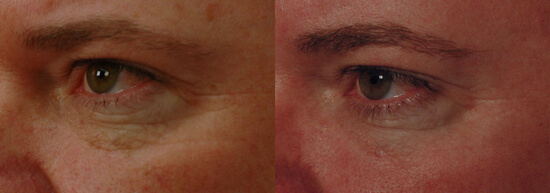
Photoaging isn’t a term that describes how we start to look in pictures as we get older! Photoaging or photodamage are terms that refer to the visible signs of skin damage caused by ultraviolet light exposure (the sun). UV light comes in the form of both natural sunlight and indoor tanning (artificial) beds. Accumulated exposure to UV can profoundly age your skin making you look much older than you actually are.
Most of us are aware of the link between sun exposure and skin cancer. But fewer realize the link between sun exposure and premature aging. Although most of us use sunscreen at the beach, only a few bother to put on sunscreen for our normal daily routine. Regular use of daily sun protection is your most powerful weapon to keep your skin looking young (or younger!) than it truly is!
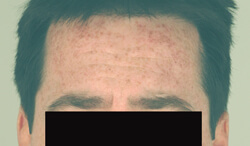

Sun spots before and after pictures
So, what does photodamage look like? Chronic, cumulative sun damage changes the texture, color and elasticity of our skin. It makes it look and feel rough. Dark patches can appear. UV also damages the deeper structural connective tissues which makes our skin thin, sallow, and saggy. These changes trigger the formation of fine lines and deep wrinkles.
If you’ve been to the dermatologist recently, you may have heard a few terms used to describe photoaging. Facial redness and spider veins refer to the development of small but visible blood vessels. Sun spots, liver spots, age spots and freckles are all terms used to describe the variety of dark, pigmented spots and patches that occur with prolonged sun exposure.
When it comes to treatments for photoaging, there are many over-the-counter creams that promise to work miracles, but buyer beware! While some stronger, physician-grade skincare products can help reduce the signs of photodamage, there is no one, single product that can reverse the signs of aging. Like Mom used to say, “An ounce of prevention is worth a pound of cure.” The best treatment for photoaging is to prevent from happening it in the first place!
If you’re really looking to improve the look, feel and luster of photodamaged skin, your best bet is laser treatment. Class IV medical lasers help with excess redness, blood vessels and spider veins, dark brown patches, and even fine lines and wrinkles.
If you choose to go this route, make sure that you find a trusted laser practitioner with a wide array of FDA-approved devices that target the specific features of your photodamage that bother you most. It is possible to reverse the signs of chronic sun exposure, but it requires finding a practice that offers a skillful, knowledgeable and comprehensive approach to the problem.
If you’re fighting acne and have failed traditional over-the-counter products and prescription medications, we have some exciting information for you. Blue light acne treatments may be just what you need to help your skin get clear.
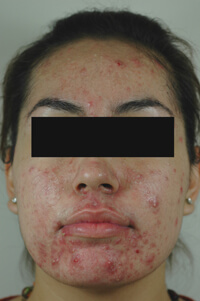
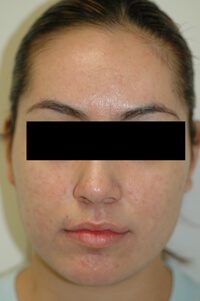 The Blu-U light is a device that uses LED technology. LED stands for light emitting diode. It isn’t a laser, but it is a medical device that has FDA approval. As you can guess by its name, Blu-U uses a blue wavelength of light which has been found to help reduce the number of acne bacteria on your skin and in doing so, decrease your acne.
The Blu-U light is a device that uses LED technology. LED stands for light emitting diode. It isn’t a laser, but it is a medical device that has FDA approval. As you can guess by its name, Blu-U uses a blue wavelength of light which has been found to help reduce the number of acne bacteria on your skin and in doing so, decrease your acne.
It is safe for all skin types, and can be used by itself to treat acne or in combination with other medications and products. Here at Celibre Medical, we use this type of LED technology combined with aminolevulanic acid (Photodynamic therapy) to treat the toughest acne cases.
It’s an exciting time for the use of light and lasers in medicine. At Celibre Medical, we are passionate about finding and using safe and effective treatments for our acne patients. We stay on the cutting edge of light and laser technology to be an industry leader in this area of expertise.
Every day at Celibre Medical, we’re asked why it is that we don’t offer cellulite and fat reduction treatments. Our answer is simple…we don’t feel that these treatments offer value to our patients and would rather have long term patients that trust us than short term profits from patients that are unhappy and feel like they wasted their money.
We understand that there’s demand for non-surgical fat reduction and cellulite treatments. Even for the fittest of us, cellulite and stubborn areas of fat can be frustrating because they limit our comfort in certain types of clothes as well as our ability to even wear certain things! We’d love to see safe, effective non-surgical treatments for this stubborn problem too, but we must honestly tell you that the technology is just not there (as of the beginning of 2018).
Let us make an important clarification: fat reduction is not the same as cellulite reduction. Although some may tout treatments for the two as one-and-the-same and claim their complementarity, it is important to note that they are two separate problems. You need to make sure the procedure you’re researching treats the specific problem that you’re wanting to correct. Common procedures for fat and/or cellulite reduction include heating or freezing the fat, sometimes in combination with suction or message, radiofrequency skin tightening, and various non-FDA-approved injections (Mesotherapy) that purport to “melt”’ fat. Other names that you’ve heard may include Coolscuplt, LipoZap, LipoDissolve, CoolLipo, Velashape and VelaSmooth. Despite being FDA-approved, we want to warn you that some of these options lack support from peer-reviewed research or the American Society of Plastic Surgeons (ASPS). We encourage you to conduct your own research.
Efficacy. Here at Celibre, that’s the name of our game. We want to be know as a practice that only safe and effective treatments. We’ve researched all the available treatments mentioned above and few more and found them to be unreliable in terms of how well they work. After consulting with patients and practitioners well-versed in these treatments, we have confirmed that prescribing diet and exercise serves as an additional component to them. Now, what truly holds the secret to success with these treatments? Is it the diet and exercise that’s working or the treatment itself? If a treatment can’t reliably stand on its own without the diet and exercise, then we won’t offer it.
Value. We provide our patients with exceptional value for the treatments we offer. That means that we talk up-front with them about what we’re suggesting, what it can and can’t do to help them achieve their goals and the results they can expect. Our motto is under-promise and over-deliver on expectations. Cellulite and fat reduction treatments won’t reliably do this. Therefore, we don’t think they provide good value for you and they don’t enhance the value of our practice.
Lastly, is focus. Laser skincare and injections is the focus of our practice. Although we’d like to be all things to all patients, we know we are very good at what we do and don’t try to offer every new service out there. We stick to what we know works well.
We understand there is growing interest in non-surgical cellulite and fat reduction treatments. We are as excited as you to see what comes next, but we’re not impressed with the current technologies. We evaluate and test latest and greatest fat and cellulite reduction options and demand reliable, reproducible results before we consider integrating it into our practice. Our commitment is to patient satisfaction and we believe this focus is what makes us unique in the world of cosmetic dermatology.
If you suffer with acne then you know personally the constant struggle to keep your skin looking and feeling as normal as possible while fighting breakouts. We want to discuss the important topic of skin care and acne because we see so many acne patients who really are misinformed. In many cases, this causes their acne to get worse rather than better. In a nutshell, you need to be kind to your acne-prone skin. Yes, we understand you want to blast it with the toughest, oil-busting products you can find, but understand that this might be part of your problem!
How? Because many people misunderstand what acne really is. It is an inflammatory skin condition (in most cases). Yes, your skin is oily, but it is also inflamed when broken out with acne. So, using harsh, astringents (alcohol) or abrasive products is going to inflame it more and can trigger more breakouts.
The skin is the largest one we have and the only one that has constant contact with the environment around us. To protect itself, the outer layer, known as the “acid mantle”, is super important because it tries to maintain a certain pH (low or acidic) to fend off bacteria, fungi and yeasts. Our oil glands are part of this process. When we use drying or harsh products, we disrupt the pH of our skin. Our body takes note and tells our oil glands to pick up the pace to help rebalance it. We then make more oil and a vicious cycle begins.
What is the answer then? Gentle skin care products that maintain the skin’s pH. If your skin is healthy and functioning properly, then you are in the best position to win against acne. If you’re fighting your skin’s pH and causing it to function poorly, then you’re helping the acne take over and becoming your own worst enemy!
Start with a gentle face cleanser. Consider green tea products as they are full of anti-oxidants and may help with the inflammation. If your skin is dry, then you need to moisturize. Choose oil-free products and use them regularly. This will help calm your skin, restore the pH balance and help it feel and look better.
If your skin is sensitive and always dry and you can’t tolerate Retin A, retinoid products or benzoyl peroxides, consider using a glycolic acid product. These are right in line with the skin’s pH and many products are formulated for dry skin. These are gentle exfoliants that over time, work well without overly drying or irritating the skin.
Don’t be part of your acne problem. Listen to your skin! If it’s tight, red, dry, flaky and painful, then it’s time to make some changes. It can take a few weeks to see improvement so hang in there!
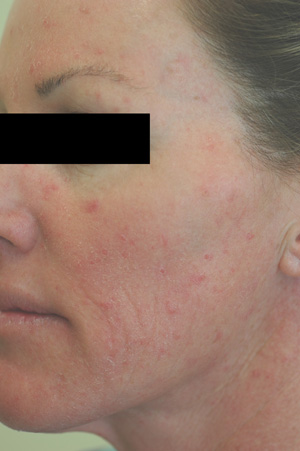
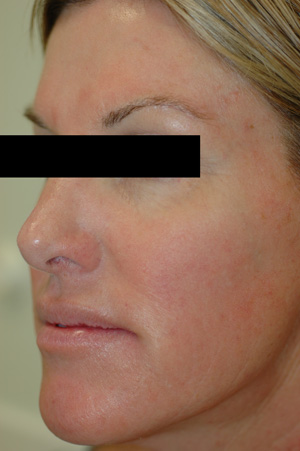
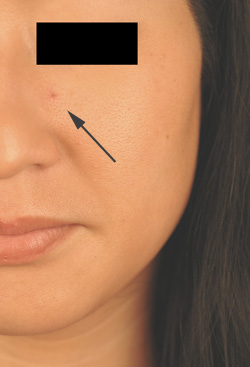
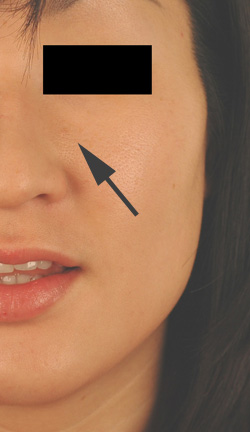
Are you seeing spots? Little red bumps on the chest, neck or back? Does it seem like they pop up overnight? If so, don’t worry! It’s likely that you are developing cherry hemangiomas – small, bumpy growths of blood vessels (or capillaries) in your skin.
In some cases, cherry hemangiomas are related to prolonged sun exposure. Most of the time, however, they are related to genetics and just one of those things that happens as we get older.
If you have either cherry hemangiomas or spider hemangiomas and you’d rather not, a hyfrecator (cauterization) can easily and effectively remove them! One word of advice though: it’s better to treat them sooner rather than later! In our experience, newer cherry hemangiomas respond better to laser treatment than older ones.
The common wart has plagued mankind for centuries. Even today it remains a bit of a mystery as to why some people struggle with warts and others don’t. Despite the widespread affliction of warts (over 2.6 million people in the U.S.), we still don’t have full proof treatments or a cure.
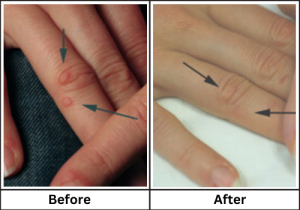
Verrucae is the medical term for warts. If you have or have had them, you know what a pain they can be. They most commonly affect the hands and feet, but any body part with skin can develop a wart. HPV or human papilloma virus causes them, and there are hundreds of different strains of HPV. One less commonly affected area that doctors often misdiagnose is the face. Facial warts can affect younger people. They erupt suddenly and look like pimples—just a few millimeters in diameter and pink to flesh colored. People can group them together or notice them appearing in a linear (in a line) fashion; others might observe them scattered in various areas of the face. Since they’re viral, they don’t get better with acne medications or treatments.
No matter where warts appear, most people with them want them gone fast. It seems like it should be an easy task, but warts can be remarkably stubborn and resistant to treatment. They are frustrating to both patients and practitioners! Some of the more popular wart treatments include freezing (cryotherapy) and irritation with things like salicylic acid solutions. Many people want to surgically remove them, but “cutting out” infection doesn’t always mean it will go away, and despite the availability and popularity of “natural” and “alternative” treatments for warts, there isn’t much evidence to show that any of these really work at all or are even safe to use.
An alternative to traditional treatments is class IV medical lasers. Two specific lasers we use are the pulsed dye and q-switched, most often in combination. You are probably wondering how a laser can treat a viral infection. It’s a great question and one that has a pretty cool answer! Lasers work for viral warts by destroying the blood vessels in the infected skin and generating sufficient heat to interfere with viral replication. If there’s no blood supply, the skin is basically uninhabitable for the wart and virus can no longer continue to grow. This treatment is totally different for this reason, because it is a very specific and predictable way to get rid of warts (unlike painful freezing or other topical methods where it’s more hit or miss).
If you’re thinking that laser treatment is painful, it really isn’t! Treatment is fast—usually only a few minutes to complete. We can safely use our lasers to treat warts on any skin type (color), and although there is no magic number of treatments that guarantees complete removal, we typically eliminate most warts with 1-3 treatments.
You’re probably wondering why more offices don’t offer laser treatment of warts? The reason is that lasers are expensive, and if a practice can’t (or doesn’t know how to) use them for anything else, it’s not cost effective to have one. They also require extensive knowledge of laser medicine to operate and use safely and effectively. This type of training and experience isn’t practical for many of the different medical specialties that see patients with warts.
Here at Celibre Medical, we are experts at using lasers for everything they can be used for—even warts. We’ve seen the dramatic improvement that patients can have despite failing many other types of treatments. If you’re frustrated by the slow (or lack of) progress with your current wart therapy, consider lasers—just make sure your treating practitioner has plenty of expertise in their use.
There are some things that get better with age: wine, cheese, and a good pair of blue jeans. Unfortunately, most of us know that our skin doesn’t make the list. If you’ve noticed unwelcomed signs of aging skin, perhaps you’ve tried skincare products, had laser therapy or are considering all the above!
Science has helped us better understand how and why we age. Generally, there are two types of factors that influence the changes we experience through the aging process: intrinsic and extrinsic factors.
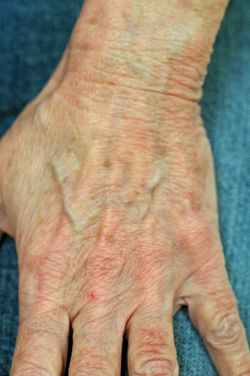
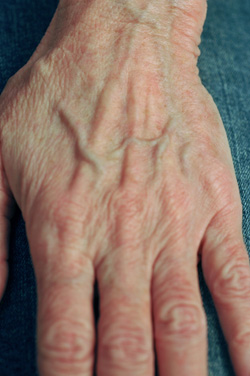 Extrinsic factors are the things outside of our bodies that influence the aging process. Sun exposure, environmental pollution, and smoking are all examples of extrinsic aging factors. Recently, research has suggested that certain lifestyle factors can influence how we age. Marital status, stress and depression can all accelerate aging.
Extrinsic factors are the things outside of our bodies that influence the aging process. Sun exposure, environmental pollution, and smoking are all examples of extrinsic aging factors. Recently, research has suggested that certain lifestyle factors can influence how we age. Marital status, stress and depression can all accelerate aging.
Intrinsic factors are unique to each of us and can affect how we age. Genetic predisposition to disease and hormonal levels are two examples of this type of factor. Sometimes, the two types of factors can compound one another. For example, it has long been recognized that Asians who smoke have a higher rate of facial lines and wrinkles than non-Asian smokers.
Consider too that the extrinsic factors of anxiety, stress and depression trigger internal hormonal changes that can affect aging. All this is to say that there is overlap between the two types, and sometimes, there is little we can do to control both.
If you’ve read this far, then you’re very interested in your aging process and highly motivated to take steps to slow it down. Despite all the technological advances and scientific breakthroughs that have contributed to the development of the anti-aging industry, there is one, simple item that most people forget about every day that can make the biggest difference in our skin: sunscreen.
Ultraviolet radiation (sun exposure) is the number one extrinsic aging factor. You could spend thousands on injections and laser procedures, but if you’re not wearing sunscreen every single morning, you might be throwing that money away! It’s true! Protect your skin and the investment you make in it by applying a readily available sunscreen every morning. It takes just seconds a day, the return on your investment is huge, and we promise it is the number one thing that you can do to slow down the effects of time and help your skin age more gracefully!
Age Spot Removal Before and After Photos
Laser Treatments for Age Spots
Laser Age Spot Removal Free Consultations
If you’ve never heard of Peutz-Jeghers Syndrome, it’s because it is relatively uncommon. It is estimated to affect one out of every 25,000 to 300,000 individuals. It is a genetic disorder that can be passed on by an affected parent, but it may also occur spontaneously as well.
If you have Peutz-Jeghers Syndrome, there’s a good chance that you have also developed a well-known, tell-tale sign of the condition: multiple, brown spots on your lips.
While these spots can also come up inside your mouth and on other areas of your face and body as well, we understand the unwanted and unwelcomed attention that brown spots on your lips can bring. At Celibre Medical, we’ve helped many patients just like you get rid of or significantly fade these aggravating spots by using our q-switched laser technology.
Q-switched lasers target the excess pigmentation, or melanin, in the spots. The treatments are safe, effective and relatively quick and painless. Many of our patients see impressive results after just 1 to 3 treatment sessions typically spread a month apart. Take a look at the before and after photos of one of our patients below.

If you have Peutz-Jeghers and want to do something about dark spots on your lips, we can help you. Please give us a call to learn more today.

